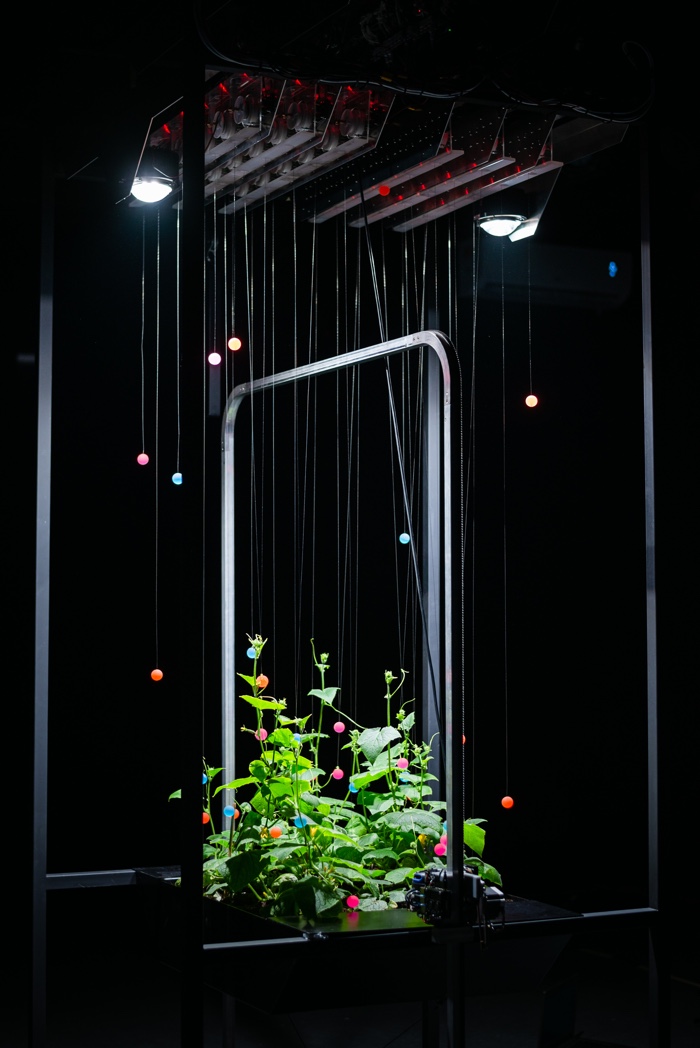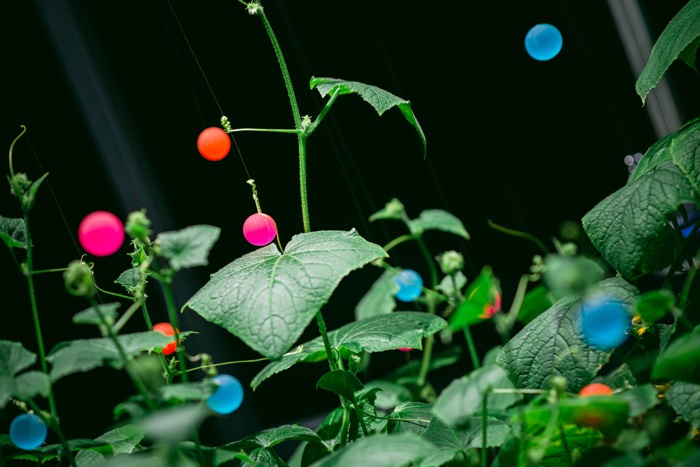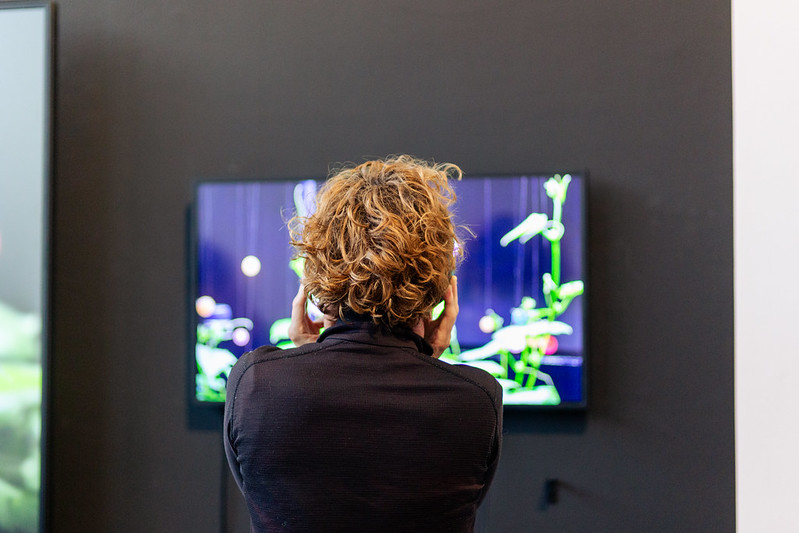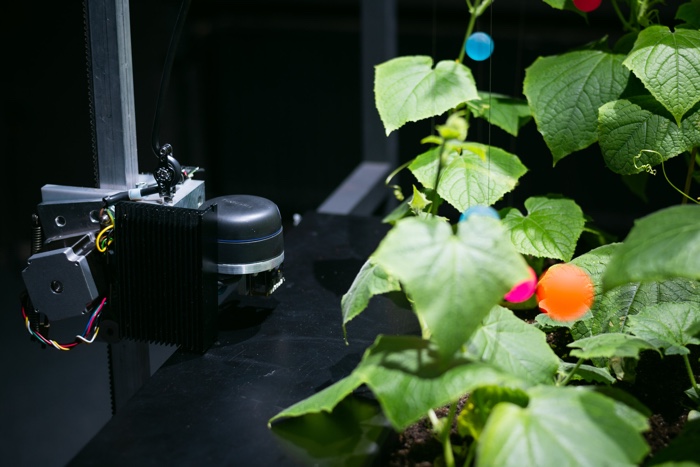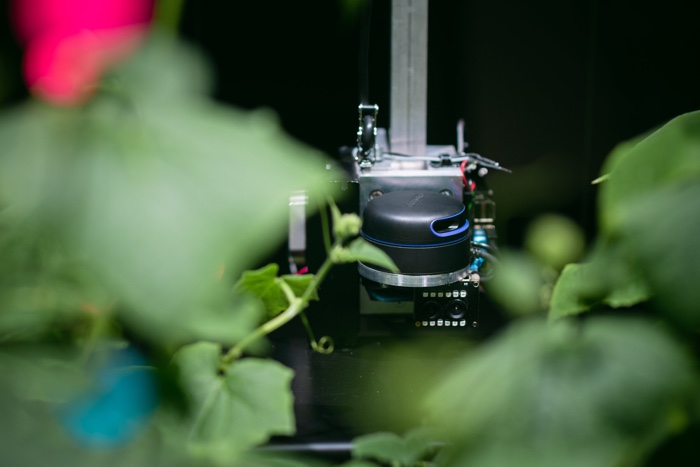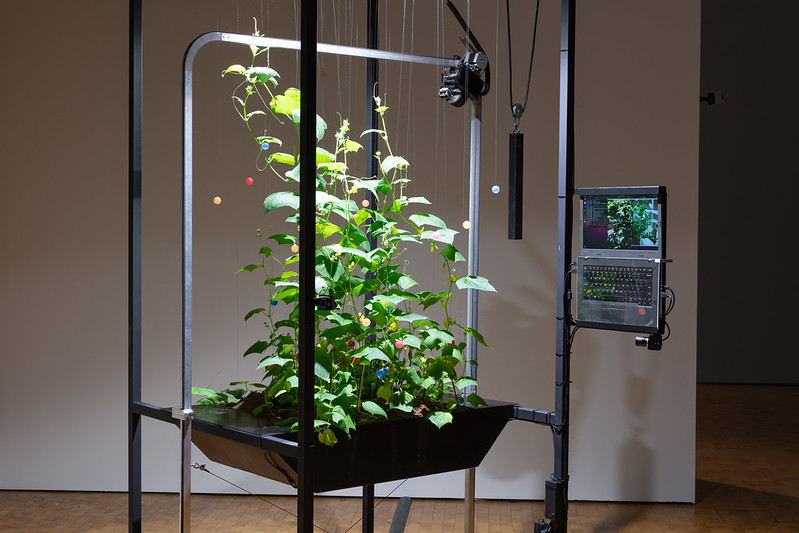Humans play. Dogs and cats play. The animals that we eat after they’ve spent a miserable life in warehouses like to play. Even insects. Bees, for example, have been found to engage in playful activities. But plants? Sessile and silent, plants are denied the ability to enjoy any activity associated with recreational pleasure and enjoyment.
Špela Petrič, PL’AI, 2020
Špela Petrič , PL’AI, 2020
Špela Petrič, PL’AI. Meta.Morf 2024 – [up]Loaded Bodies at Trøndelag Senter for Samtidskunst. Photo: Juliane Schütz
PL’AI, an installation i discovered at the Meta.Morf Biennale for Art and Technology in Trondheim, explores the possibility of play between cucumber plants and an AI robot. With this work, Špela Petrič investigates the notion of a play as an ontological condition of all living bodies, including plants. The act of playing —unlike games, which are limited by clear rules or goals- reflects the curiosity of existence and suggests the existence of inner life.
The project meant that the relationship between plants and machines had to be entirely remodelled. So far that relationship has been driven by extractivist interests. In the agricultural industry, for example, AI technologies are used for crop monitoring, maximising yields, reducing water and pesticide usage. Therefore, the artist had to design technologies that would see plants as partners, not as mere resources.
Špela Petrič, PL’AI, 2020
First, Petrič had to engineer an AI-powered robot which sole purpose is to play with plants. In an echo of the artist’s iconic Skotopoiesis performance, the AI-robot had to adapt to plant temporality. Instead of doing what it does best -computing fast, the machine has to drastically slow down and play in cucumber time, which requires some kinetic and cognitive adaptations that are too challenging for humans.
PL’AI is a three-metre tall robot developed in collaboration of experts from the fields of computer and cognitive science, biology, engineering, design, art and philosophy. At the top of the machine, orange, blue and pink bouncy balls dangle from stainless steel threads. At the bottom, the tray with all the nutrients that cucumber seeds need to thrive.
As they grow, cucumbers use tendrils to explore their environment in a swaying motion, sensing touch, light and perhaps even scents. If they come across a suitable object or surface (in this case, the robot’s wire) they wrap around it and pull on it with a helical coiling mechanism.
The robot approaches the plants using the 36 individually controlled threads, their rhythm mirroring the tendrils’. It senses the cucumbers and feeds the images through a neural network, which in turn reconfigures the AI’s image of the plant and determines how to move the coloured balls and enter in contact with it.
Over time, the suspended wires of the robot transform into a trellis that allows the cucumber plants to stretch, flower and fruit, eventually producing cucumbers.
Špela Petrič, PL’AI, 2020
Špela Petrič, PL’AI, 2020
Špela Petrič, PL’AI, 2020. © ZKM | Center for Art and Media; photo: Jonas Zilius
While the visitor might not see play unfolding with their own eyes, they can observe the “exchanges” between the plants and the machine on a computer screen, which continuously replays the last 24 hours of interaction as a time-lapse video and reports on the latest steps taken by the AI robot.
PL’AI questions how we can employ technology to engage with living entities that manifest their complexity and cognitive abilities in radically different forms. The work also brings together plant intelligence and machine intelligence, two forms of intelligence that we struggle to fully comprehend and that force us to reconsider our overarching conception of life.
PL’AI is at Trøndelag Senter for Samtidskunst and other venues across Trondheim until 18 August. The festival Meta.Morf 2024 – [up]Loaded Bodies is curated by Zane Cerpina, Boris Debackere, Espen Gangvik and Florian Weigl.
Previously: Pareidolia. AI finds faces on grains of sand.
